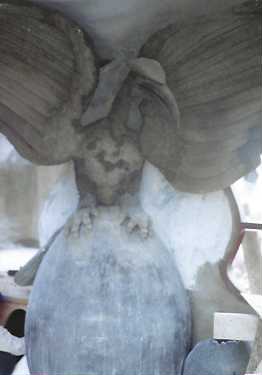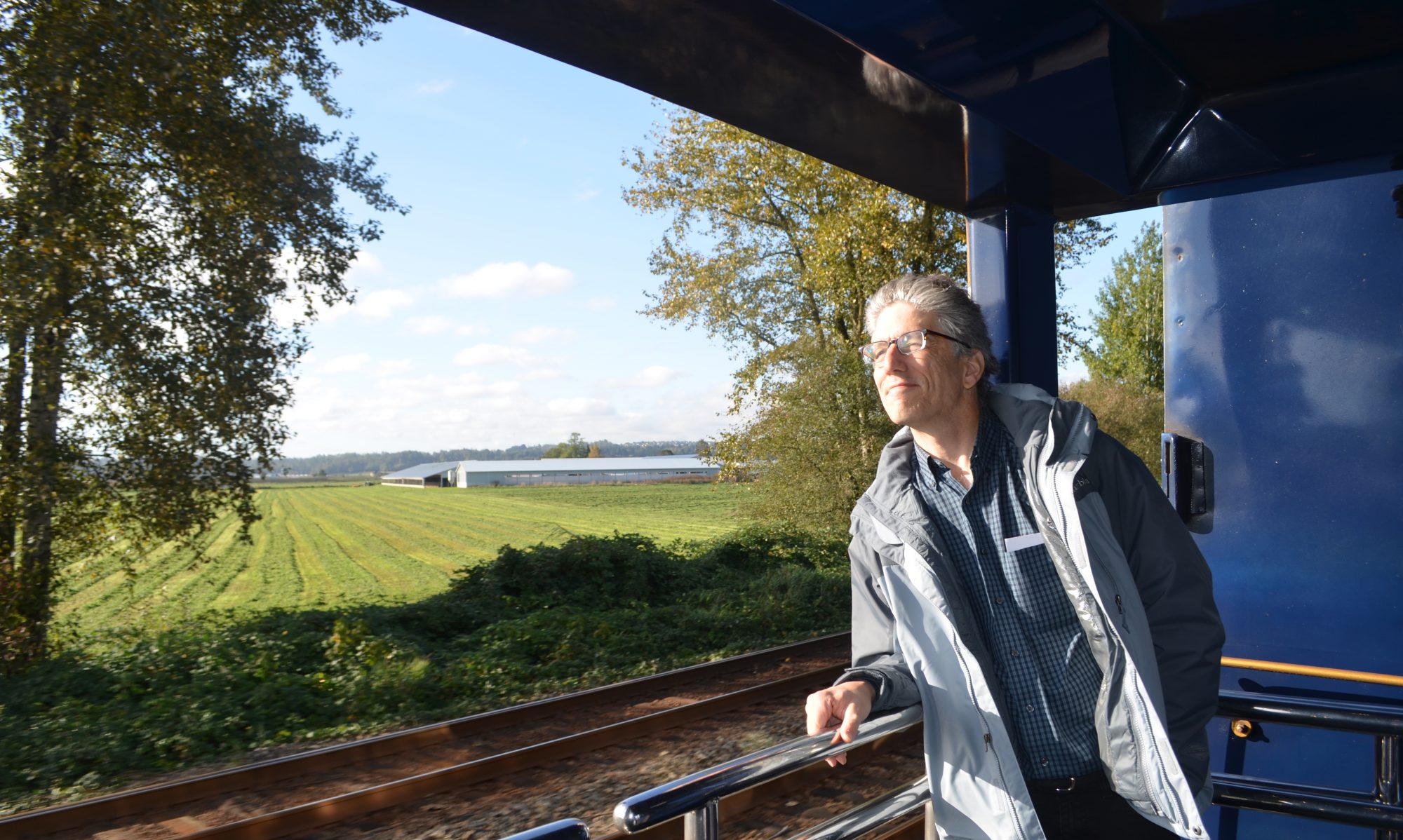A Night In The Crazy House

I was in no mood for the honeymoon suite.
I was alone, I had no girlfriend, it had been raining all the way into Dalat, I didn’t have anybody to talk to, I was getting more depressed by the minute, and even the live monkeys in the driveway weren’t enough to cheer me up.
The Crazy House manager’s insistence that I stay in the Honeymoon Room wasn’t helping. Besides puzzling me, her persistence stabbed the knife of solitude into my heart a little deeper. Fortunately, there was already a guy in the room with “couple” written all over it, so I got the termite room instead.
What makes this silliness even stranger is that I’m not making any of it up.
After two weeks in hot, loud, crowded Saigon, I hopped a bus to Dalat to get away from it all. As it turns out, Dalat may have been a little too far away.
As towns go, Dalat isn’t bad. The French liked the burg so much they nicknamed it Le Petit Paris. European expatriates so enjoyed the cooler weather they used it as a resort area to retreat from the heat and humidity of the country’s lower elevations. And the North and South Vietnamese loved it so much it was hardly touched by war.
More than 20 years after the end of the war it’s easy to see what they saw in the place. It’s a quiet little town where the scale is much more manageable than that of Saigon. The downtown area probably takes up 20 blocks; many of the streets are lined with villas, and there’s a lake with a strolling path, flower gardens and swan-shaped paddle boats on the edge of the town center. A fine mist of rain from low-hanging clouds covered the area when I arrived, and it was so quiet that I couldn’t believe that a country with a place so calm could have a city as frenetic as Saigon.
The burg wasn’t deserted, though. On the contrary, the park by the lake was crowded, adults were wandering along the walking paths, children were playing and the market in the center of town was in full swing when I arrived. If ever there were a place that screamed “MELLOW!” this would be it.
Normally, such a stark change wouldn’t have been a problem, but this one came too quickly without a chance to decompress. I was going through the emotional bends and didn’t have anyone to talk to about it.
I thought I might find relief at my hotel, but the place the tourist van took me to was so deserted the owners gave me a discount on their already obscenely low rate just to get me to stay. It wasn’t where I wanted to stay, but it was so cheap and money so tight I couldn’t refuse.
I had wanted to stay at Hang Nga, a place I’d read about in my guidebook. Called “Crazy House” by locals, the part-hotel, part tourist attraction was supposed to have rooms in fake tree trunks, a multi-level giraffe with a stairway in its legs and a tea room in its neck, and one of the few statues of a naked woman in Vietnam. I didn’t spend my first night there because I didn’t know where it was and because my driver seemed disturbed when I asked. It was a universal response. Every time I asked, I got the same panicked look with no explanation. Given Dalat’s claim to fame as an artist colony, I would have thought people would have been more tolerant of the avant garde. Then again, Washington state is considered a hiker’s paradise, but that doesn’t mean everyone hikes.
Still, the reaction was enough to convince me Hang Nga was the place for me.
More than a place to stay, Hang Nga is also an artist colony, tourist attraction and carnival funhouse moved outdoors. Although I could see the fake giraffe’s head craning out, and large, gnarled trees for a couple of blocks before I finally got there, I didn’t really appreciate the place until I passed through the gate.
The driveway wasn’t long, maybe 40 or 50 feet, but it was long enough to get a feel for the place. The monkeys were only a small part of it. As I slowly made my way to the office, I looked to my right and saw a courtyard filled with metal mushrooms of all sizes, five-foot-tall fake spider webs, a mushroom-shaped stand serving coffee, tea and hot chocolate. There was also a pond in the middle of all the craziness. To my left was the three-story giraffe I had seen from blocks away, complete with a variety of nooks on each level. There was also the first of a series of large, gnarled trees that looked like they had been made of papier mache, painted a brownish color, and had a variety of oddly-shaped windows in their trunks and branches. Two more trees were across the courtyard while another was under construction with rebars sticking out of the tree’s poured concrete. While they may have been made with the same materials, each of the trees was unique.
By the time someone came to the desk, I was righteously depressed, knowing I wanted to spend a night there but realizing that $15 was a hefty pricetag for my thinning wallet. Once the desk attendant showed me the termite room, however, I was hooked and did what any good American would do under the circumstances. I declared a personal emergency, called in the troops to borrow against my future, and booked a room for the following night, even though I still couldn’t figure out why the owner wanted me to stay in the Honeymoon Room. It wasn’t any more expensive, and I wasn’t with anyone. After reserving the room, I headed back to my hotel for the night and started counting the hours until my new hotel sent a motorcycle to pick me up.
At least, that’s what the hotel manager said would happen.
Although I was ready an hour before the motorbike was due, it never showed. An insistent man driving an ancient but well-maintained sedan showed up and claimed to be from Hang Nga, but I didn’t believe him because he was an hour early and wasn’t driving a motorbike. Infuriated, he stormed off swearing, but came back several times over the next hour repeatedly reassuring me he was from Hang Nga. To say he was angry doesn’t do him justice. With each visit, his face reddened further, his gesticulations grew wilder and his muttering louder. By his last visit he looked the way a mailman would moments before going postal. If he had been a cartoon character, he was easily upset enough to have steam come out his ears and the top of his head blow off.
My refusal wasn’t a matter of principle. It was self-protection. My guidebooks were filled with stories of backpackers taking rides from people claiming to represent one hotel then taking them to another, leaving them screwed if they agreed to stay at the overpriced places they had been taken to, or stranded quite some distance from other accommodations if they didn’t. I would have been happy to go with him if he had produced an ID proving he was with the hotel, but the only thing he had was a piece of paper with the name of the hotel written on it. Hell, it wasn’t even on the hotel’s letterhead. I never bothered to ask myself if Hang Nga even had hotel stationery. (It didn’t). So, he went to the front desk of the hotel where I was waiting, angrily dialed the phone, screamed into it, then stomped off. When the driver was a half hour late, I realized I’d made a mistake. By the time he drove by again I was ready to ride, but he kept going. Just after his drive-by gawking the desk clerk from Hang Nga showed up to tell me the man was indeed the hotel’s driver.
The reason he had become increasingly irritated with me was that he’d had his car parked on the sidewalk for almost half an hour until a policeman threatened to write a ticket for $20. The cop later talked about impounding his vehicle.
I felt so bad I gave him a big tip.
Once the ordeal ended he seemed genuinely amused.
I spent the rest of the day exploring my room, Hang Nga and Dalat. And there was plenty to see, especially where I was staying. My room, for example, had a fireplace shaped like a termite’s nest, an overhead bathroom light shaped like a smaller nest, and, ironically, more wood than most of the other rooms. The Honeymoon Room (not the Honeymoon Suite) had a small downstairs anteroom and a spiral staircase with stairs shaped like bongo drums. I don’t know what the name of the third room I saw was, but I call it the Alice In Wonderland Room because its fireplace was made to look like a carved wooden wildcat hanging from the ceiling and perched on a rock. When I raised my camera to take a picture of it the maids laughed and flipped a light switch so I could see red lights glowing in the cat’s eyes. Another room, still under construction, was dominated by a sculpture of an eagle with its wings spread.
The grounds weren’t large, maybe the size of three standard-sized middle-income suburban yards stitched together, but there was plenty to see. Every time I walked out my door I saw something new. It might be a statue, figurine, or oddly shaped, fully functional bench made out of materials I never would have dreamed of using to make furniture. I’m pretty sure I could have stayed there a week and still see something I hadn’t seen before each time I roamed the grounds.


What made all this even better was that it had been built by the daughter of a former Communist Party functionary, making her untouchable by local authorities. Hang, the owner, told me she built the place to celebrate the arts. She decided to house the rooms in trees and a giraffe because they are closer to nature than the square rooms at most hotels. She said she still had plenty of work to do on the guesthouse because there were rooms under construction and more were planned including a much larger tree she hoped to use as a showcase and lodging for a range of artists including actors and opera performers.

A Sign of the future. a new room under construction.
Having spent my first day roaming through the market in the middle of town, I spent most of the next day wandering the outskirts looking for intriguing places I’d heard about including the Governor General’s residence, the Cremalliere Railroad station and Emperor Bao Dai’s Summer Palace, but I followed the LP map and kept ending up in the same place, not sure how I’d gotten there. By the time I finally figured it out I was stuck in a torrential rain and had to seek refuge in the expensive cafe of an even pricier luxury hotel. The rain stopped, but the overcast continued, leaving me so depressed I went back to my room and slept away the afternoon.
Once I awoke, I booked the morning bus to Nha Trang, the next stop on the backpacker’s circuit. I had no idea what a huge impact such a small choice would have on the rest of my visit to Vietnam.
